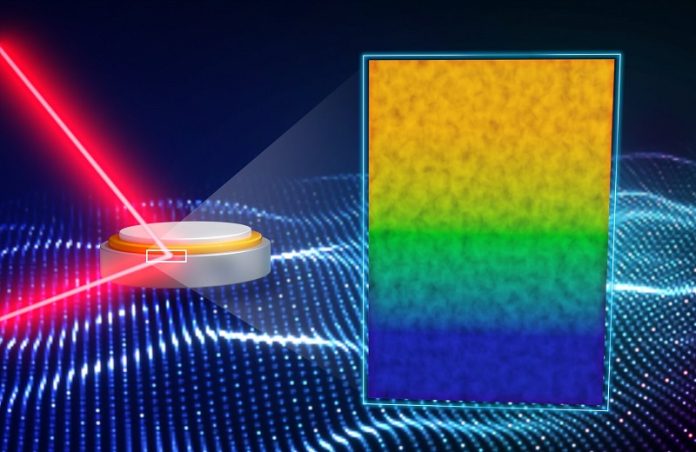
Scientists at Oak Ridge National Laboratory, supported by the Department of Energy, have made an exciting breakthrough in the field of energy storage.
They employed an innovative technique called neutron reflectometry to investigate the inner workings of a solid-state battery while it was functioning.
By analyzing its electrochemistry, they uncovered a crucial element contributing to its exceptional performance—a remarkably thin layer that allows charged lithium atoms to flow rapidly from the anode to the cathode, blending seamlessly into a solid electrolyte.
The Quest for Better Batteries
The demand for better energy storage solutions has become increasingly vital in our modern world. Andrew Westover and James Browning from Oak Ridge National Laboratory, co-leaders of the study published in ACS Energy Letters, expressed the pressing need for batteries with higher energy density, lower cost, faster charging capabilities, improved safety, and longer lifespan.
Addressing Flammability Concerns with Solid-State Batteries
Traditional rechargeable batteries use liquid electrolytes, which pose a safety risk due to the instability of lithium—the metal atom that maximizes energy density when tightly packed into the negatively charged anode.
To tackle this flammability issue, researchers aim to transition to solid electrolytes, which offer improved safety features.
Introducing LiPON: The Mysterious Solid Electrolyte
Oak Ridge National Laboratory invented lithium phosphorus oxynitride (LiPON), a solid electrolyte, almost three decades ago. Despite its successful application, the underlying reasons for its effectiveness remained unclear.
To unlock the potential of LiPON on a larger scale, it was crucial to comprehend its mechanisms thoroughly.
The Key Role of the Solid Electrolyte Interphase (SEI)
Previous studies indicated that the solid electrolyte interphase (SEI) plays a vital role in the repeated charging and discharging of solid-state batteries.
This interphase forms between the electrolyte and the working electrode and can change in composition and thickness over time.
A high-quality SEI is crucial for optimal battery performance, while a poor SEI results in subpar functionality. In conventional batteries, the SEI gradually expands, consuming the electrolyte in the liquid-based battery and leading to decreased capacity over time.
The Thin and Stable Interphase of LiPON-Based Batteries
In the case of LiPON-based solid-state batteries, a thin SEI layer forms, passivating the lithium and preventing it from reacting. Unlike the SEI in traditional batteries, this layer remains stable and does not grow.
The research team combined neutron reflectometry with electrochemistry to examine this stable interphase between LiPON and lithium for the first time.
They discovered that the layer was as thin as 7 nanometers, consisting of about 70 atoms. This finding demonstrated the possibility of creating thin interfaces in solid-state batteries that exhibit excellent performance.
Neutrons: A Gateway to Exploring Solid-State Batteries
The researchers chose to employ neutron reflectometry due to the small scale and solid-state nature of the materials involved.
Neutrons, like X-rays in the medical field, allow for nondestructive probing of materials without the need to physically cut them open.
Neutron reflectometry enabled them to investigate the interphase in solid-state batteries, exploring stability and long-term cyclability, and gaining insights into the functioning of these devices.
Shaping the Future of Energy Storage
The researchers believe that the combination of neutron reflectometry and electrochemistry will facilitate the development of high-performance batteries.
By studying different types of solid electrolytes, they aim to identify materials that exhibit the required stability for fast-charging and high-energy batteries.
The insights gained from these studies will inform the design of future batteries, enabling the creation of safer, more efficient, and longer-lasting energy storage solutions.
Inventing the Batteries of Tomorrow
As our reliance on technology continues to grow, the need for innovative energy storage solutions becomes increasingly evident.
The quest for better batteries entails the invention of materials that possess the stability required for next-generation energy storage devices.
Through continued research, scientists are on the path to unlocking the full potential of solid-state batteries, ensuring a brighter and more sustainable future for us all.



